On 11th August 2023, I was walking along the lesser use track over the top of Granite Island (not the usual circular tourist track around the edge of the island), when I got a pleasant surprise. In front of me was a family group of eight Brown quails, very busy foraging and pecking on the walking track, bordered on both sides by knee-high grassland.
Habitat
Brown Quail (Synoicus ypsilophorus)(previously Coturnix), also commonly called silver quail, swamp quail and Tasmanian quail. A native bird of Australia’s grassland and shrubland but is also found in Papua New Guinea and Indonesia. It has previously been introduced to New Zealand and Fuji. Brown quails, being plentiful in the wild, is considered to be a “species of least concern” by the IUCN Red List. However, in South Australia it is rarely seen. Hence, Brown Quail is a protected species under the South Australian National Parks and Wildlife Act (rated as ‘Vulnerable’).
Appearances
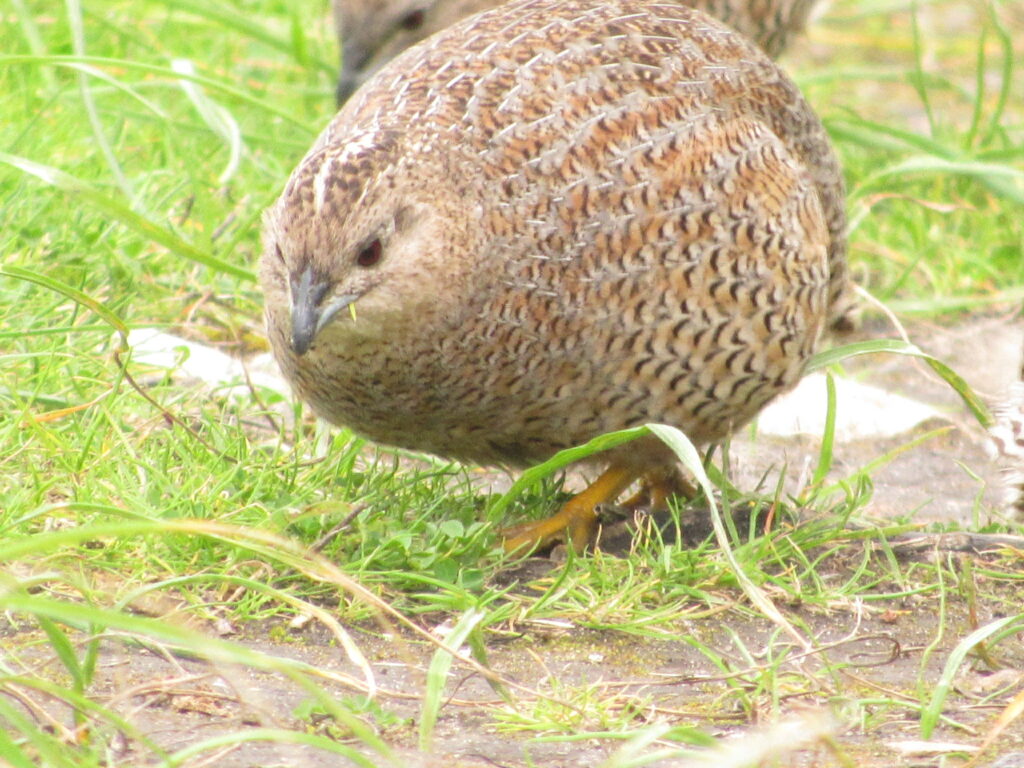
Brown Quails are plump, ground dwelling birds (adult varies from 17 to 22 cm in length). The small head with a steel-grey beak merges so imperceptibly into the rounded body that the short neck is hardly discernable. Its eyes are coloured orange or red, if seen in good lighting condition, otherwise it looks black. Its short, yellow legs help it to maintain a terrain-hugging posture while it scurries around foraging for food. It can fly for short distances but prefer to escape by running into the tall grass on both sides of the track.
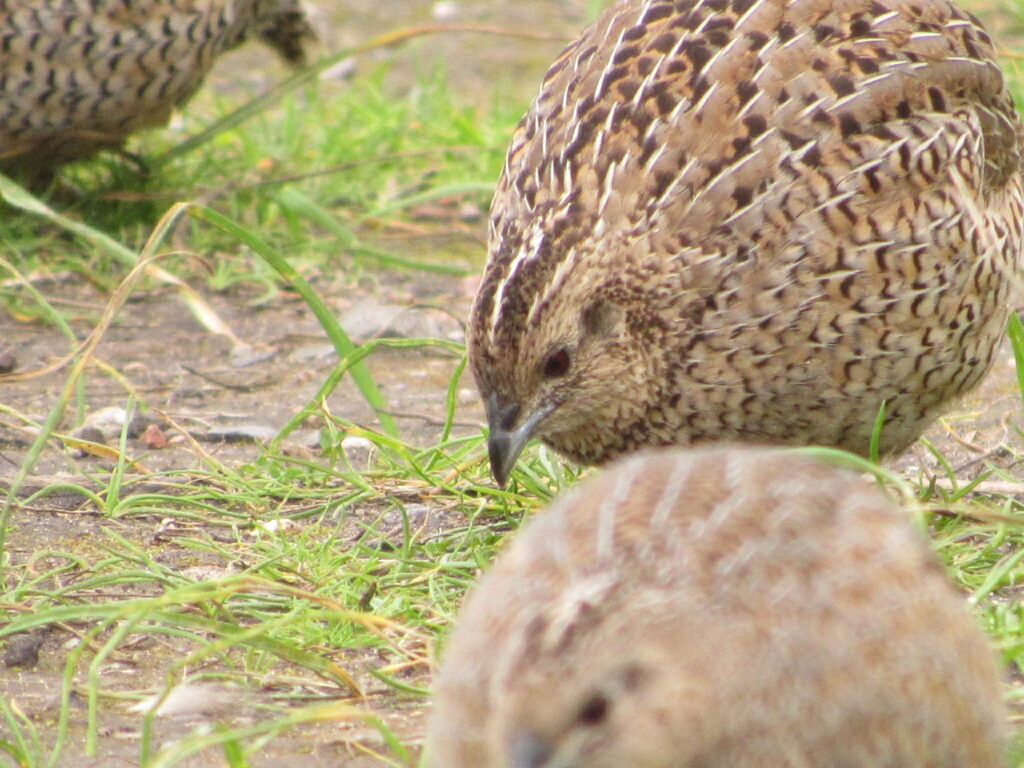
First impression of the Brown Quail is of a very prickly bird. Its whole back and sides are protected by numerous short and sharp, caudally-pointing silvery spines. On closer inspection, these so-called spines are the main shafts of each feather (Images 1, 2 and 3).
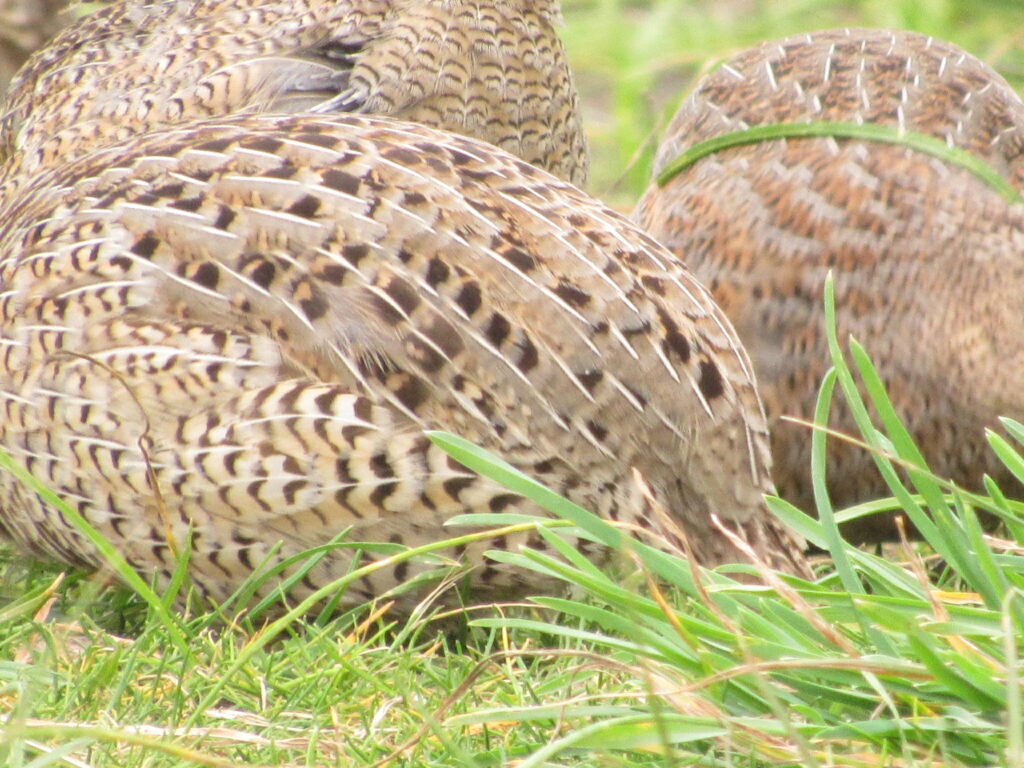

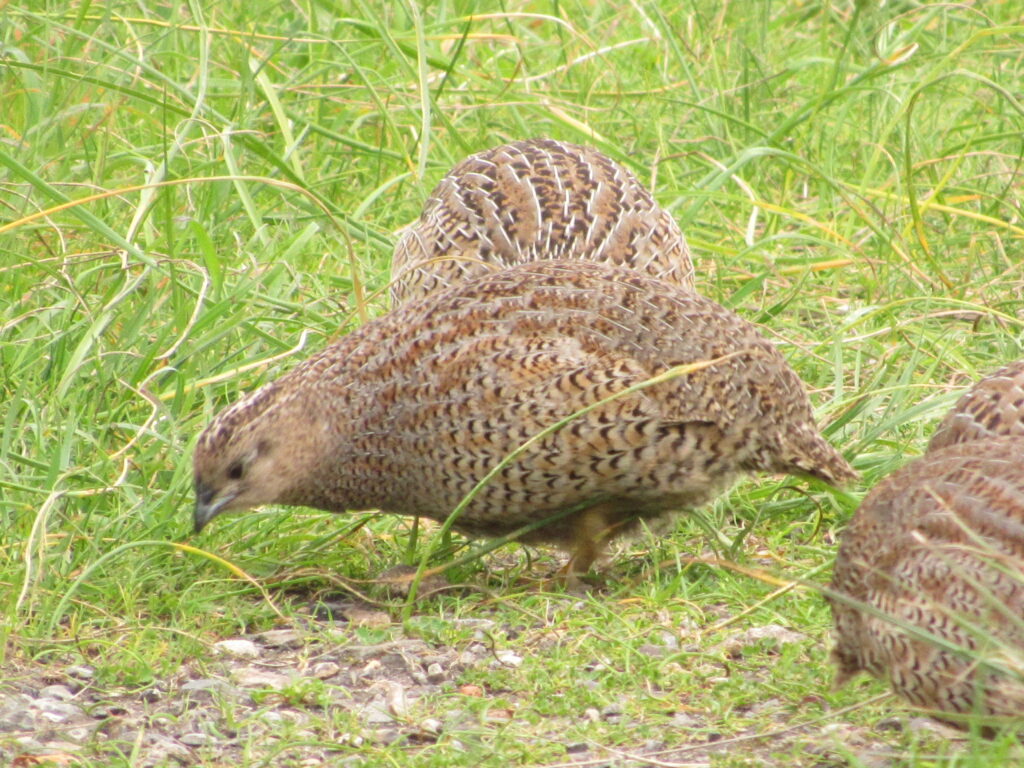
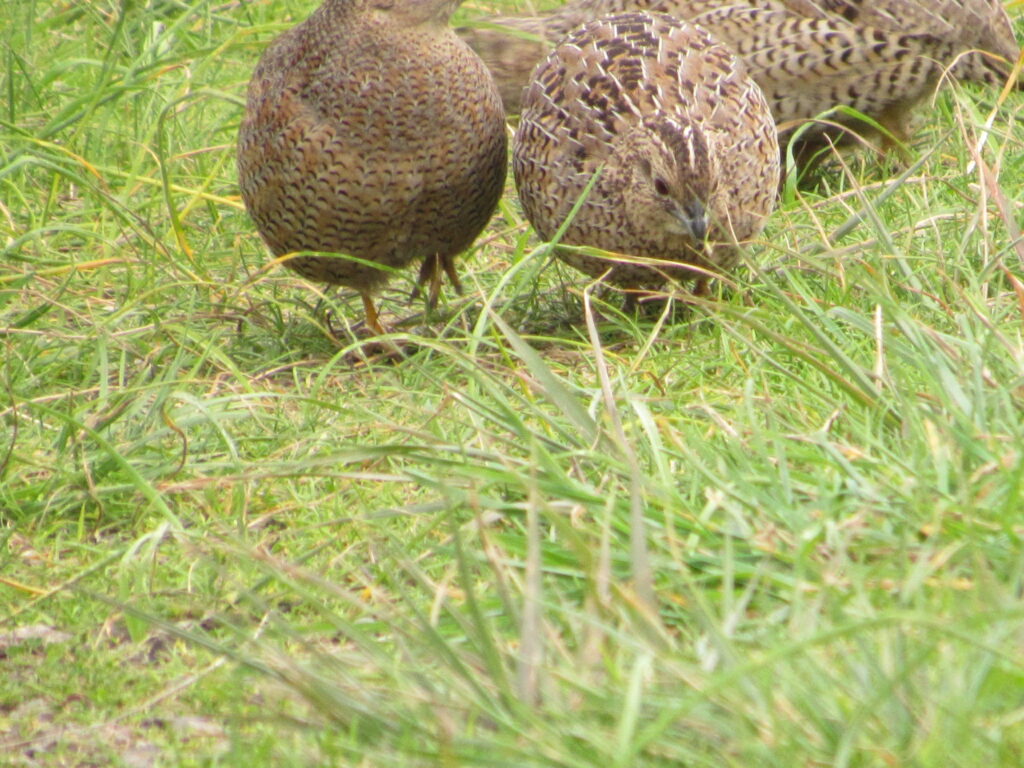
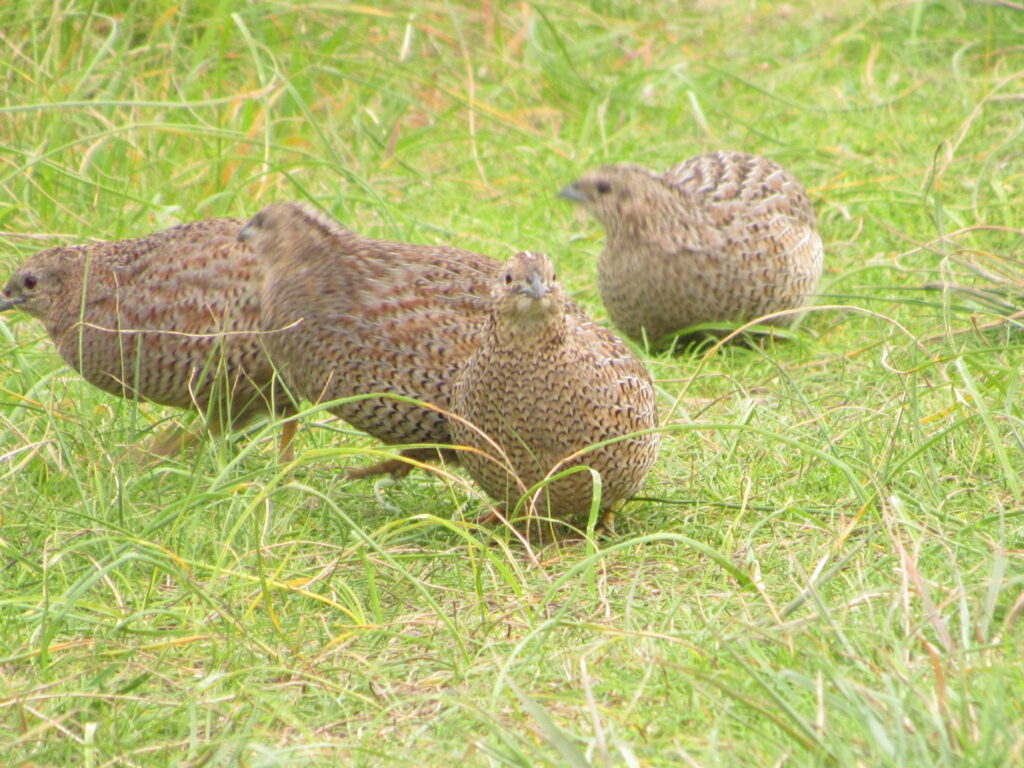
The feathers on its breast, belly and flank have a characteristic thin black curvy “Chevron” marking, with the silvery white main feather shaft passing through the middle of the “Chevron” marking. Each feather has about 2 to 4 “Chevron” markings. In some views the chevron markings appear as a pattern of scallops or a flock of flying birds in stylized drawing (Images 8, 9 and 10).
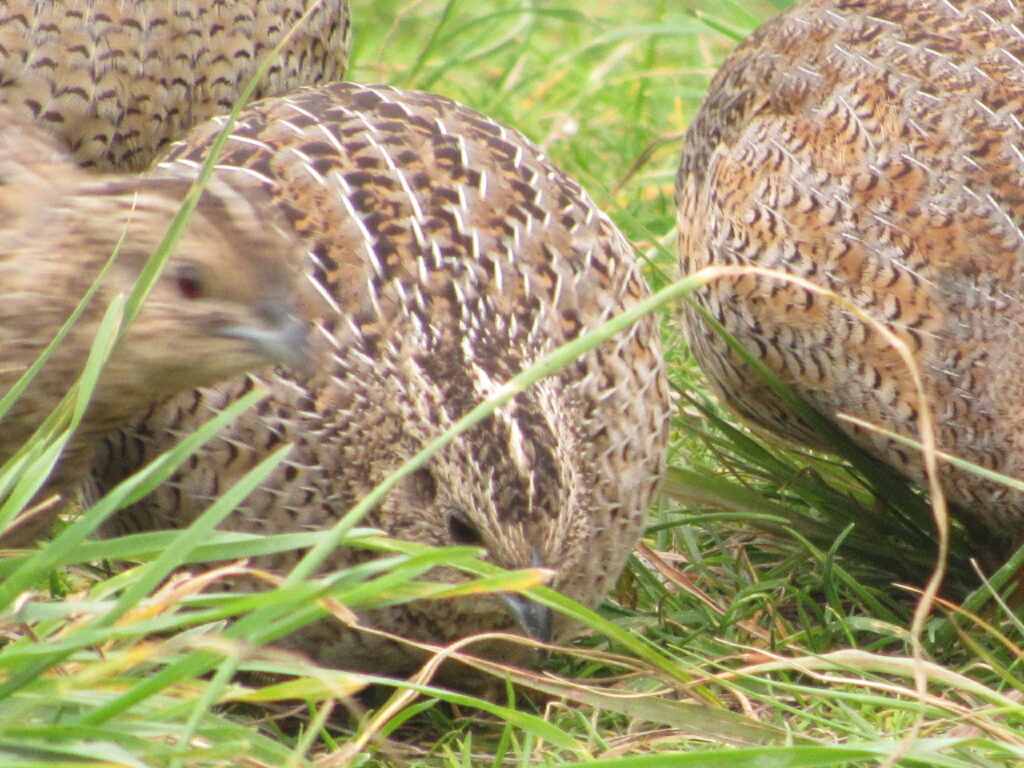
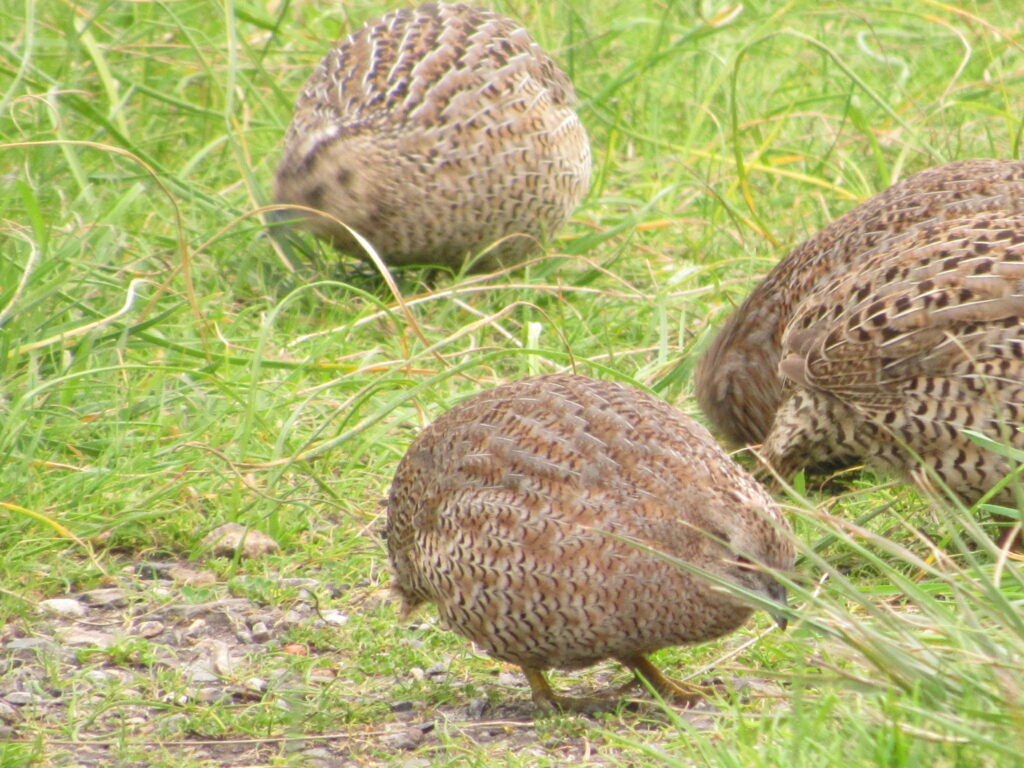
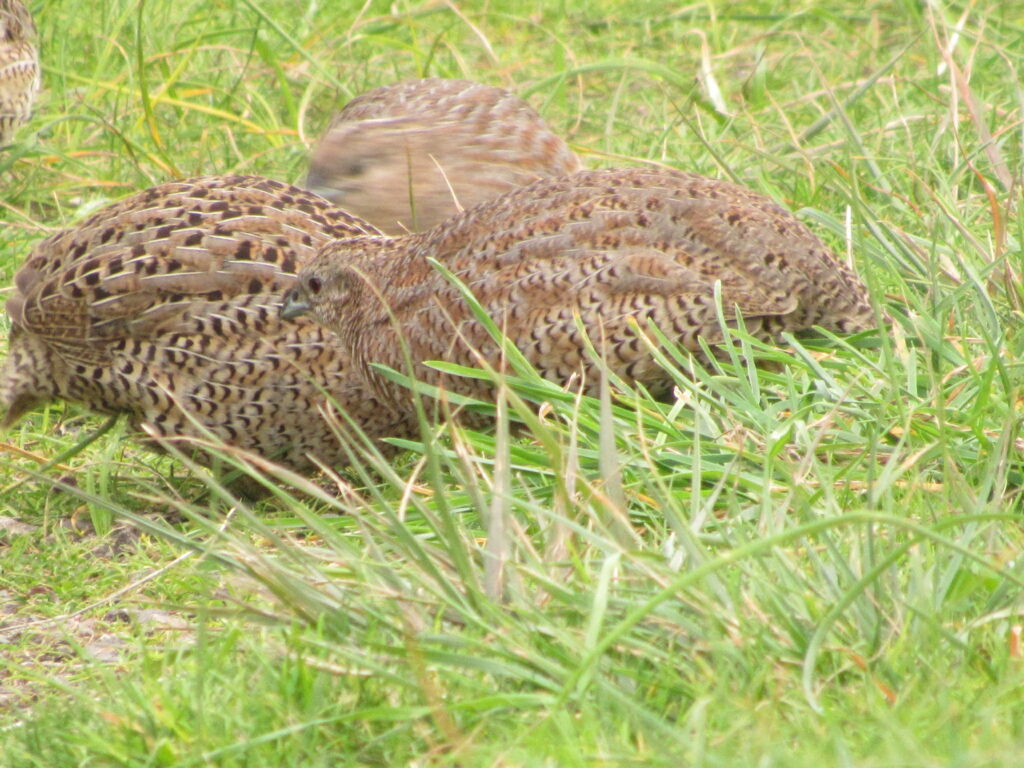
Each of the horizontally arranged feathers over the back and upper part of the flank has a dark brown patch on superior, dorsal half of the feather. The rest of the feather, including the inferior, ventral half has a variable colouration of light grey or light orange.
Both sexes have similar colour pattern, but it is said that the male has more numerous and darker brown patches on its back. The female is paler, with back patches in smaller numbers and in size. However, the paler colouration enables the horizontal, orange-coloured bands with ill-defined borders, to be seen more easily at certain angles.
The crown has two broad brown bands continuing downwards to the nape and neck. They are separated by a thin buff coloured line. The rest of its head is buff coloured with a round, brownish ear tuff on either side of its head.
It has a short, buff coloured tail, downward curving and barred with the “Chevron” pattern.
The above complex plumage colouration gives the Quail excellent camouflage and deters potential predators with its defensive strategy of being a painful, spiky meal target.
Food
Food consists mainly of grass, seeds, and small invertebrates like small insects and worms.
Breeding
Breeding season is usually from August to January. The monogamous pair of Brown quails scrape a shallow nest in the ground and then line it with grass. The nest is hidden amongst the tall grass or shrub. The female quail lays a half dozen eggs or more in it and sits on them for about 3 weeks. I suspect the father relieves the mother for a short period during the day, so that she can have toilet and meal breaks. At the end of 3 weeks, the precocial chicks hatch and are looked after by both parents. If the mother quail starts brooding her second clutch of eggs after two weeks, the father quail takes over the whole job of looking after the chicks from the first clutch. It is not an easy job as their natural predators, the Nankeen kestrels (Falco cenchroides) and Black shoulder kites (Elanus axillaris) are often seen in the sky above Granite Island. The Nankeen kestrels are so happy here that they have raised many successful generations of youngsters from their favourite nesting sites amongst the holes and crevasses in the tall sheer cliff of the old granite quarries on the island. Mother quail also faces a difficult task. When she leaves her nest for short breaks, her eggs are in danger of being eaten by (?) the Shingleback lizard (Tiliqua rugosa) of Granite Island.
The birds communicate with shrill calls. One characteristic call is a double whistle, the latter note ascending. The below website has beautiful recordings of the Brown Quails call. https://ebird.org/species/broqua1
References:
https://animalia.bio/brown-quail








2 Responses
Hello!
We saw 4 on Granite island on Sunday!
We told the volunteer there and she said they are rare to spot!!
Great to see, just found your article.
Hi Lianne,
Great to hear you saw the brown quails too. They have been difficult to spot but we often hear them calling from the long grass or dashing across the paths. The markings on the feathers are so beautiful.
Hope that you found our blogpost article helpful and descriptions clear. We have a lot of other articles on bird observations and behaviours too.